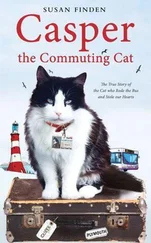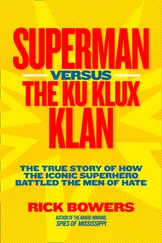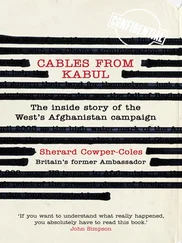Andrew Sorkin - Too Big to Fail - The Inside Story of How Wall Street and Washington Fought to Save the FinancialSystem--and Themselves
Здесь есть возможность читать онлайн «Andrew Sorkin - Too Big to Fail - The Inside Story of How Wall Street and Washington Fought to Save the FinancialSystem--and Themselves» весь текст электронной книги совершенно бесплатно (целиком полную версию без сокращений). В некоторых случаях можно слушать аудио, скачать через торрент в формате fb2 и присутствует краткое содержание. Жанр: Старинная литература, на английском языке. Описание произведения, (предисловие) а так же отзывы посетителей доступны на портале библиотеки ЛибКат.
- Название:Too Big to Fail: The Inside Story of How Wall Street and Washington Fought to Save the FinancialSystem--and Themselves
- Автор:
- Жанр:
- Год:неизвестен
- ISBN:нет данных
- Рейтинг книги:4 / 5. Голосов: 1
-
Избранное:Добавить в избранное
- Отзывы:
-
Ваша оценка:
- 80
- 1
- 2
- 3
- 4
- 5
Too Big to Fail: The Inside Story of How Wall Street and Washington Fought to Save the FinancialSystem--and Themselves: краткое содержание, описание и аннотация
Предлагаем к чтению аннотацию, описание, краткое содержание или предисловие (зависит от того, что написал сам автор книги «Too Big to Fail: The Inside Story of How Wall Street and Washington Fought to Save the FinancialSystem--and Themselves»). Если вы не нашли необходимую информацию о книге — напишите в комментариях, мы постараемся отыскать её.
Too Big to Fail: The Inside Story of How Wall Street and Washington Fought to Save the FinancialSystem--and Themselves — читать онлайн бесплатно полную книгу (весь текст) целиком
Ниже представлен текст книги, разбитый по страницам. Система сохранения места последней прочитанной страницы, позволяет с удобством читать онлайн бесплатно книгу «Too Big to Fail: The Inside Story of How Wall Street and Washington Fought to Save the FinancialSystem--and Themselves», без необходимости каждый раз заново искать на чём Вы остановились. Поставьте закладку, и сможете в любой момент перейти на страницу, на которой закончили чтение.
Интервал:
Закладка:
A seasoned and assured public speaker, Steel had appeared before congressional committees, but the stakes hadn’t been nearly as high. In addition to tough questions about what had come to be known as “Bear Weekend,” he knew another subject was likely to arise: Fannie Mae and Freddie Mac, the so-called government-sponsored enterprises that bought up mortgages. The GSEs, which were blamed for inflating the housing bubble, had been political and ideological hot buttons for decades, but never more so than at that moment.
With Bear Stearns’ failure, the senators might even begin connecting the dots. One of the first causalities of the credit crunch was two Bear Stearns hedge funds that had invested heavily in securities backed by subprime mortgages. It was those mortgages that were now undermining confidence in the housing market—a market that Fannie and Freddie dominated, underwriting more than 40 percent of all mortgages, most of which were quickly losing value. That, in turn, was infecting bank lending everywhere. “Their securities move like water among all of the financial institutions,” Paulson had said of Fannie and Freddie.
Quick-witted and handsome, Steel was actually a much better communicator than Paulson and would often upstage his boss, who couldn’t help stammering even at routine Treasury meetings. The two men had known each other since 1976, when Steel went to work at the Chicago office of Goldman Sachs after graduating from Duke University. Like Paulson, Steel came from a modest background, growing up near the campus of Duke University. His father serviced jukeboxes and later sold life insurance; his mother worked part time at a Duke psychiatry lab. At Goldman, Steel was an ambitious banker and rising star; he moved to London in 1986 to start the equity capital markets group there and help the firm gain a foothold in Europe.
But four years earlier, Steel—now worth more than $100 million as a result of being a partner during Goldman’s IPO—had decided to retire, having worked in various senior positions but not being next in line to lead the firm. Though he always planned a triumphant return to the private sector, he wanted time to pursue public service, like many other Goldman alums. After establishing his public-sector bona fides, including a position as a senior fellow at the John F. Kennedy School of Government at Harvard, he accepted Paulson’s invitation to join him at Treasury as under secretary for domestic finance on October 10, 2006.
Now, as he entered the conference room with Scogin for one last round of Murder Board, he knew he had to be on his game. Treasury colleagues David Nason, chief of staff Jim Wilkinson, and Michele Davis, assistant secretary for public affairs and director of policy planning, were already seated with a small group across the table.
The burning question they all knew would be asked: What role had the government played in the negotiations that had led to the original $2-a-share price for Bear Stearns? None of the Treasury staffers had a clue as to what the other witnesses—JP Morgan’s Jamie Dimon and Bear’s Alan Schwartz—were going to say about what had actually occurred when they testified later in the day.
Steel knew that Paulson had pushed for a lower price to send the powerful message that shareholders should not profit from a government rescue. But no one at Treasury had ever confirmed that, and for Paulson’s and everyone else’s sakes, it would be best not to acknowledge what had really happened: On Sunday afternoon, March 16, Paulson had called Dimon and told him, “I think this should be done at a very low price.”
Steel knew he had to dodge that issue at the hearing. It was imperative, as Davis and others had stressed during Murder Board sessions and at other meetings, that he avoid getting drawn into a debate over whether $2 was the right price—or $10, for that matter. The key idea he had to focus on was Paulson’s overall concern that, because taxpayer money was involved, shareholders should not be rewarded. And more important, they encouraged Steel to remain adamant that Treasury had not negotiated the deal for Bear. If anything, he should deflect the question onto the Fed, which was the only government agency that legally could be party to such a transaction.
Before the role playing began, Nason briefed Steel on a key development. He recounted some recent conversations he had had with the staff of Senator Richard Shelby, the ranking Republican on the Senate Banking Committee. “Shelby’s going to be difficult,” Nason warned.
That was an understatement. Shelby was deeply unhappy with Paulson’s performance, not only because of the Bear Stearns bailout, but in response to another recent Paulson project: a provision in Bush’s economic stimulus package, introduced just days after the bailout, that raised the ceiling on the amount of mortgages that Fannie Mae and Freddie Mac could buy. For days Shelby had not returned the secretary’s phone calls, until Paulson finally barked at his staff, “Doesn’t he know I am the secretary of the Treasury?”
They also knew they had to be wary of Senator Jim Bunning, well known as a “markets know best” purist. “Senator Jim Bunning, Republican. Kentucky,” Steel replied jokingly when a picture of Bunning was held up during Murder Board. “Everything we’re doing? Yes, it’s all bullshit. We’re socialists. Thank you, Senator.”
The Murder Board preparations continued until minutes before Steel left for the hearing. The key objective now was to protect Steel, and the Treasury Department, from any last-minute surprises. Staffers carefully checked that morning’s newspapers to make certain there was no new revelation about Bear Stearns or some harsh opinion from a columnist that a senator might quote that morning. Happily, there was nothing.
Steel made the short trip from Treasury to Capitol Hill in a Treasury car with his aides. The hearing room in the Dirksen Senate Office Building was already buzzing with activity, as camera crews set up their equipment and photographers tested the light. As Steel took his seat, he noticed that Alan Schwartz of Bear Stearns had already arrived, even though he was not scheduled to testify until that afternoon, and greeted him. To Steel’s immediate left was Geithner; to his right, Cox; and next to Cox, Bernanke. Seated in a single row were a group of men who, more than anyone else in the world, were being entrusted with solving its financial problems.

“Was this a justified rescue to prevent a systemic collapse of financial markets,” asked Senator Christopher Dodd, the Connecticut Democrat and chairman of the committee, “or a $30 billion taxpayer bailout, as some have called it, for a Wall Street firm while people on Main Street struggle to pay their mortgages?”
The fireworks started almost immediately. Committee members were sharply critical of the regulators’ oversight of financial firms. More important, they questioned whether funding a takeover of Bear Stearns had created a dangerous precedent that would only encourage other firms to make risky bets, secure in the knowledge that the downside would be borne by the taxpayer.
Bernanke hastened to explain the government’s position: “What we had in mind here was the protection of the American financial system and the protection of the American economy. I believe that if the American people understand that we were trying to protect the economy and not to protect anybody on Wall Street, they would better appreciate why we took the action we did.”
Then came the question Steel had prepped for: Had it been the Treasury secretary who determined the $2-a-share price?
Читать дальшеИнтервал:
Закладка:
Похожие книги на «Too Big to Fail: The Inside Story of How Wall Street and Washington Fought to Save the FinancialSystem--and Themselves»
Представляем Вашему вниманию похожие книги на «Too Big to Fail: The Inside Story of How Wall Street and Washington Fought to Save the FinancialSystem--and Themselves» списком для выбора. Мы отобрали схожую по названию и смыслу литературу в надежде предоставить читателям больше вариантов отыскать новые, интересные, ещё непрочитанные произведения.
Обсуждение, отзывы о книге «Too Big to Fail: The Inside Story of How Wall Street and Washington Fought to Save the FinancialSystem--and Themselves» и просто собственные мнения читателей. Оставьте ваши комментарии, напишите, что Вы думаете о произведении, его смысле или главных героях. Укажите что конкретно понравилось, а что нет, и почему Вы так считаете.












